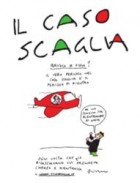Legal glossary
How the Italian legal system works:
The Italian judicial system provides for three degrees of adjudication, once the investigations have been completed: the court of first instance and the court of appeal, ruling also on the substantial issues, and the Supreme Court, ruling instead only on legality issues.
While in the Anglo-Saxon systems the verdict of a jury in a court of first instance eliminates the presumption of innocence, rendering the judgment immediately enforceable, in Italy the defendant is “presumed innocent” until all the degrees of adjudication have been exhausted.
Precautionary measures
Precautionary measures, therein included measures restricting the personal freedom of the indicted person, may be applied by the magistrate, upon request by the public prosecutor, during the investigation phase, only in the event of serious evidence of guilt and if the specific requirements set forth by the law (art. 273 of the Italian Code of Criminal Procedure) for the successful completion of the investigation phase are met, notably in relation to the danger of escape of the indicted person, the danger of repeat crime and the danger of tampering with evidence. These requirements are very strict and they must be ascertained with even greater care when applying the most sever precautionary measure, pre-trial incarceration. This measure must indeed be applied when all the other measures (house arrest, etc.) are deemed to be insufficient to satisfy the precautionary requirements identified for each case.
Pre-trial incarceration must last from three months to one year, depending on the seriousness of the offence.
The Italian legal system does not provide for a bail option, that is the payment of an amount of money determined by the judge to free the indicted person.
Trial timelines
It is common knowledge that one of the most felt problems in the administration of justice in Italy concerns the long times required to hold a trial, which – once the preliminary investigations (which are often initiated as a result of suspicions, theorems and assumptions) have been opened, closed and reopened and after the three possible degrees of adjudication – may hold an individual as defendant for years, with serious consequences for the family, social and work life of the individual who is and remains presumed innocent.
Criminal conspiracy offence
Articles 416 and 416 bis of the Italian Penal Code set forth two types of criminal conspiracy.
The first one (art.416 of the Italian Penal Code) concerns the event that three or more people form a partnership to organize, promote or commit any type of offence, thus an event which is completely different from the Mafia criminal conspiracy, set forth in art. 416 bis of the Italian Penal Code.
Mr. Scaglia has been charged with participating in a “simple” criminal conspiracy, set forth in art. 416 of the Italian Penal Code, to enable Fastweb to commit tax fraud.
The charge of criminal conspiracy is procedurally instrumental to obtain legal assistance from other States and to use particularly powerful instruments such as interception.
Attachment of assets
The attachment of personal or company assets is applied to collect evidence (for evidence purposes) or as a “preventive” measure, when said assets are connected to the offence, with the objective to prevent the offence from worsening or its effects from continuing or to prevent the perpetration of other offences (art. 321 of the Italian Code of Criminal Procedure).
Whoever is found not guilty shall not receive any compensation for the damage suffered. Whoever has been illegally detained is entitled to receive pecuniary compensation.





